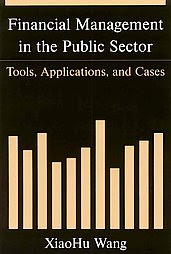

For the next Mayor of Fall River, a review of the current status of the City’s actual conditions has to be made with precision and care. The City’s needs are ever evolving, are never static, and Executive Management cannot possibly make its initial decisions that will determine the fate of all the rest to follow without accurate and critical information.
THE BASICS – Part 1 Financial Documents and Management Reports
Whenever a new Mayor takes office, he/she must treat the City as a victim of a natural disaster. Various departments and operations must be reviewed to measure base line conditions, for both finance and management operations. Then a “TRIAGE” must occur, much like an emergency medical team, to determine which operations in the City have the most importance to the immediate existence of the corporate body known as the City of Fall River. It is very possible that there could be overlapping areas of importance, and that some operations that appear less critical to the casual observer than may be the actual case may be addressed before more obvious choices.
Because of the fact that available revenues have fallen below necessary expenses, finances and financial operations must be reviewed immediately. As was stated in the movie “The Right Stuff” “no bucks, no Buck Rogers!”
*Determine current fiscal year monthly actual receipts vs. expected receipts, YTD
*Obtain a detailed cash flow document, inclusive of all sources of revenue to Fall River, to be charted each month, for a period of the last five fiscal years. This should be readily available. This is critical to know the past and expected cash flow, which in turn determines short term borrowing needs to meet payrolls and other warrant approved expenses. It also allows for the appropriate property tax revenue flows adjusted for Property Revaluation years and “in year” State Aid adjustments. Such detailed cash flow planning is an absolute must to minimize short term borrowing expense, and maximum effort must be made to prevent ANY form of debt service to be assessed on the Cherry Sheet charges page. This is lazy budgeting and is a way to hide performance deficiencies in financial planning
*Debt service chart showing the actual principal and interest for each capital project and purchase requiring the use of long term (> 5 years) or short term (< 5 years) debt, inclusive of Revenue and Tax Anticipation Notes, with specific amortization pay down dates. This is required for immediate and long term cash flow and budget planning. It also should be the first device used to plan debt issuance, and calculate back the time periods by which each step in the debt issuance process must be initiated, inclusive of Bond Counsel activity and Bond Offering documents preparation in a timely fashion.
*Fixed Cost Chart, including all items that are regular occurring expenses not appearing in departmental budgets, or removed from departmental budgets for special attention, such as insurances and specific contracts, and associated time frame for payment. Of particular note is the City portion of the Group Health Insurance Appropriation. The chart should include attached addendum related to specific items on the list. For example, a breakdown by separate department portion of Group Health Insurance, based on individuals within each department, indicating the monthly deductions for each employee according to chosen plan for that employee, totaled by department and also showing the corresponding matching amount owed by the City, with both amounts deposited into the Group Insurance Claims Trust Fund no later than once per month per source. This is to ensure that all health insurance funds are deposited to the Trust Fund in a timely fashion to allow interest in the account to inure to the Trust Fund, and not the City’s General Fund. The chart can then be verified during the City's annual audit to ensure timely transfers by both parties (employees and the City) into the Trust Fund. Employees must never bear the cost of City cash flow, and the interest earned by the Trust Fund is applied to dampen the administrative expenses of the fund as well as rate increases.
*Schedule of Bid Projects/Items to detail the major projects and items requiring bidding to maintain compliance with all bidding statutes and minority hiring and bidding requirements. This ensures that needed preliminary work is well planned so materials and items can be supplied to various departments as needed in a timely fashion.
*Detailed YTD actual vs. projected Expenditure chart showing monthly actual year to date expenditures by salary and expenses for departments and expenses for fixed cost items. These charts should be updated to provide further detail for the City’s cash flow needs and for future budget and cash flow planning for the next fiscal year and out into the following four years, at a minimum.
*Detailed Revenue and Expenditure Forecast The budget is a living document. It is never static in time. It is both prospective and reflective. The future dictates current need, and past experience is the basis for future performance, in most instances. Therefore, this document is the single most important chart of how things are working right now and how you expect things to work in the future. Based on summary actual/expected revenue summary by month and actual/expected expenditure summary by month, it is the primary basis on which to make critical management decisions, and must be updated each month as ongoing revenue and expenditure data are received.
Tomorrow I will continue with a more detailed discussion of the long term Financial and Budgeting needs of Fall River.
.jpg)

No comments:
Post a Comment
Hey...feel free...what your about to write is probably just fine...but try to write what Prof. Kingfield of the movie Paper Chase wanted his students to speak aloud....FILL THE BLOG WITH YOUR INTELLIGENCE...PLEASE!!!!!!!